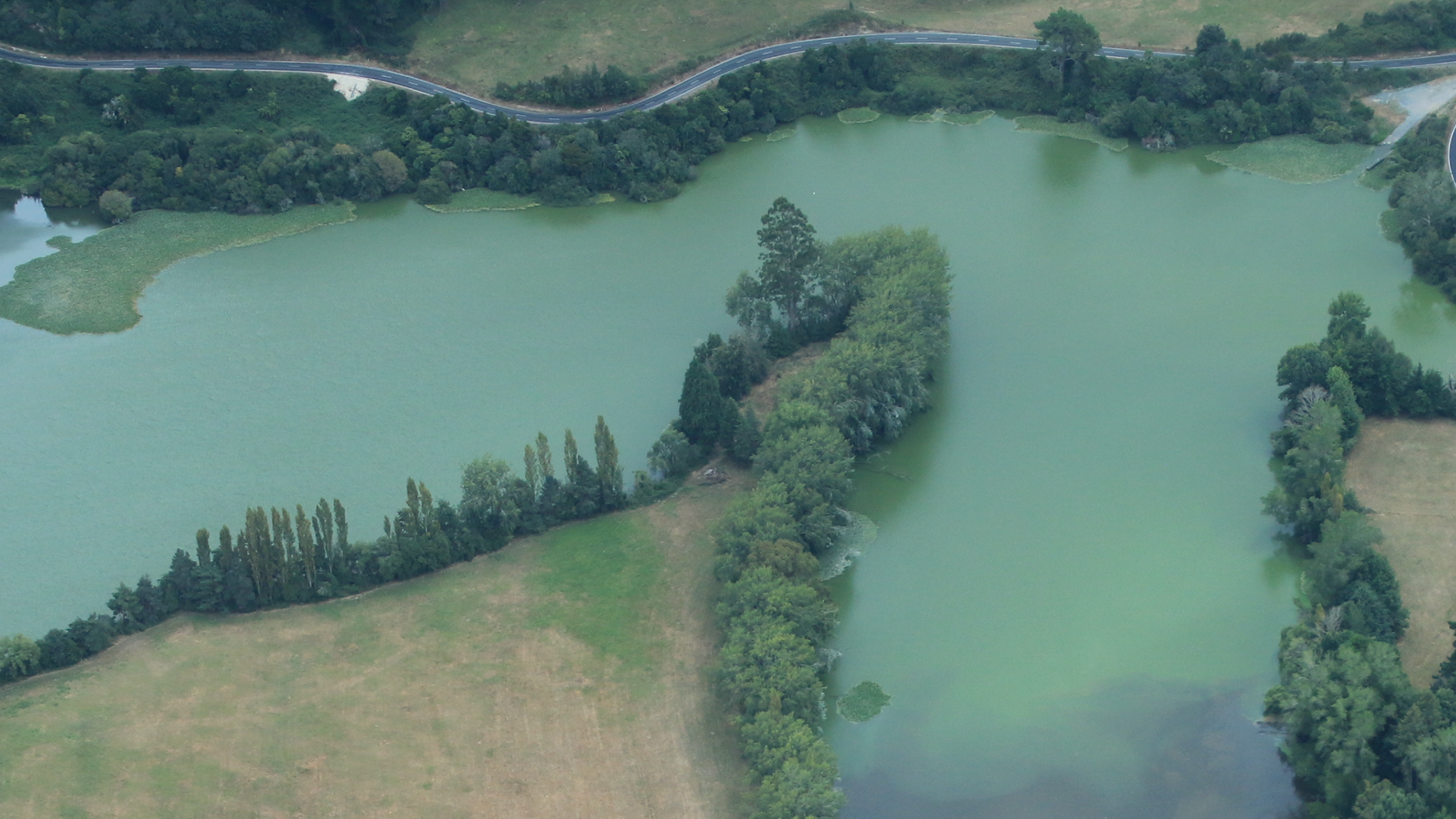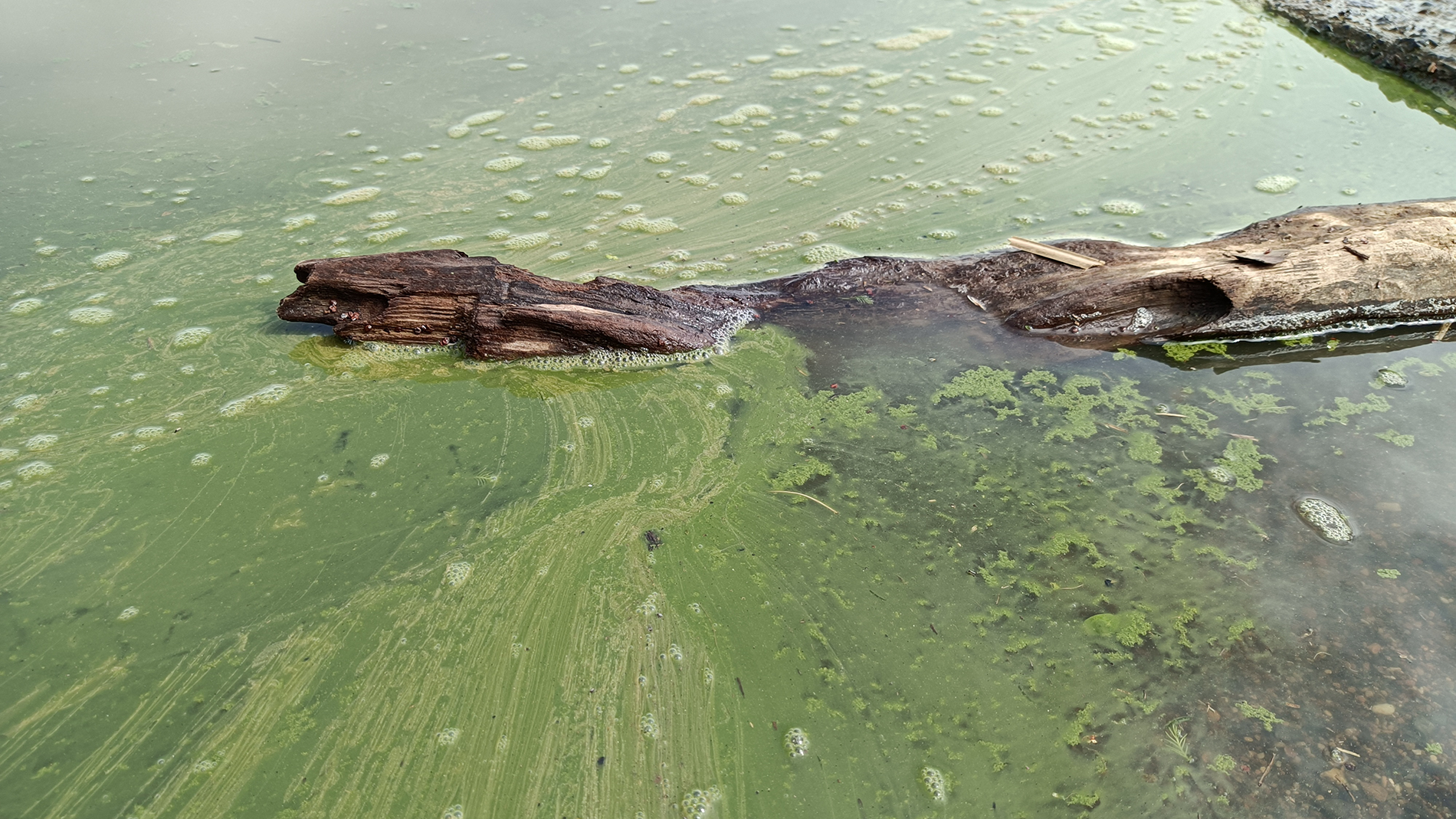Algae occur naturally in our rivers, lakes, streams and coastal waters, and flourish during hot and fine conditions. Most algae are harmless, but high levels of some species may be toxic, and blooms may result in health warnings being issued.
Cyanobacteria or blue-green algae are often found in waterbodies throughout New Zealand.
Cyanobacteria are also called toxic algae as they have the potential to produce toxins that can affect public health. Contact with these toxins can also cause skin irritations and other adverse health effects, such as asthma attacks, rapid onset of nausea and diarrhoea. Extra care should be taken with toddlers and dogs as they like to put things into their mouths and even a small amount (the size of a 50-cent piece) can be enough to cause serious harm if eaten.
 Blue-green algal bloom near Lake Ohakuri
Blue-green algal bloom near Lake Ohakuri
Marine algal blooms
Marine algal blooms are occurrences of rapid and excessive growth of algae in marine environments and may consist of both microscopic organisms (phytoplankton) and larger macroalgae such as seaweeds.
Marine algae are a natural and important part of the marine ecosystem and form the base of marine food webs which other organisms rely upon.
When environmental conditions are suited to marine algal growth, they may sometimes form large “blooms” leading to the water appearing green, orange, red, or the excessive growth of larger macro algae. These blooms are a natural process and can be driven by factors such as changes in oceanic currents (upwelling), variation in nutrient inputs from land and riverine sources, increased sunlight, and warmer water temperatures. However, sometimes certain algal species may produce toxins which can be harmful when people or animals come into physical contact or ingest seafood which have been exposed to these toxins.
Harmful Algal Blooms
In some circumstances certain blooming algal species may produce toxins which can accumulate in marine organisms, potentially leading to seafood contamination and can pose health risks to humans and animals. Larger blooms can clog fish gills, wash up on beaches, and potentially lead to fish kills through de-oxygenation as the bloom dies off. Monitoring in coastal areas for shellfish exposure to paralytic shellfish poisoning (PSP), is undertaken by the Ministry of Primary Industries (MPI) and more information can be found on their website.
Water quality monitoring and results
Waikato Regional Council and partner organisations monitor lakes and the Waikato River (including the hydro lakes) during the warmer months. Results are reported on the Can I swim here page of LAWA.
LAWA is the most comprehensive and up-to-date source of recreational water quality information for New Zealand. LAWA provides this information so you can use it as a guide to decide where and when to swim, or use the water for other recreational activities, such as fishing, sailing or wading. So, check the LAWA web page before deciding when it is safe to use the water, and check out the swim smart checklist.
Please note that water quality monitoring results are representative at the time of sampling. Heavy rain flushes contaminants from urban and rural land into waterways and we advise you not to swim for 2 – 3 days after heavy or prolonged rain – even at sites that generally have good water quality. Check that the water is clean and clear before taking a dip.
Cyanobacteria can rapidly bloom to harmful levels, and not all freshwater sites are monitored for these toxic algae. Play it safe — if you can see cyanobacteria blooms in rivers or lakes, avoid contact for you and your pets.
For factsheets and frequently asked questions, visit the LAWA website.







To ask for help or report a problem, contact us
Tell us how we can improve the information on this page. (optional)